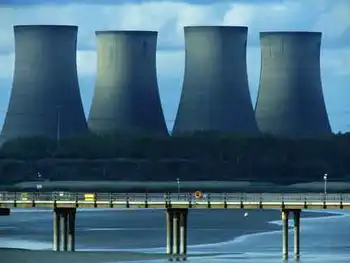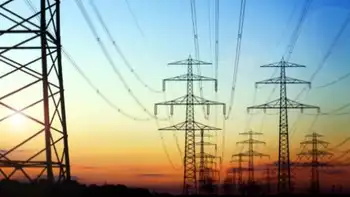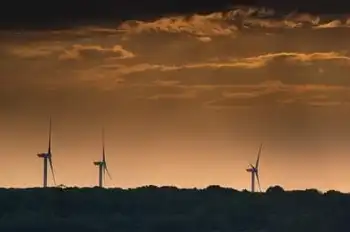Coal plant plan stokes cost questions
MARSHALLTOWN, IOWA - If the Iowa Utilities Board decides to let Alliant Energy build a coal-fired electricity generator at Marshalltown, Alliant's customers will pay for the plant in their regulated rates.
But if the board turns down the Alliant request, the utility's customers won't get off free. They'll still pay for the electricity - not in the regulated rate portion of their bill, but on the "fuel adjustment cost" line in the monthly statement.
That's where utilities such as Alliant pass through their extra charges, such as for natural gas and other fuels. Alliant said in a Feb. 28 filing with the Securities and Exchange Commission that in 2007, one-third of the power it provided its customers was bought from other utilities or independent generators.
The cost of that power is passed along to customers as a fuel adjustment. That cost has gone up in recent years as the price of utility fuels - primarily natural gas and coal - has risen.
"Our whole point in asking for this new plant is that we don't want the Iowa economy to be subject to the volatility of the national wholesale electricity market," said Tom Aller, Alliant senior vice president who heads the utility's Iowa operations. "We want to be less reliant on purchased power."
Opponents said the choice between new generation and purchased power is spurious.
"We say that Alliant doesn't need either new coal-fired generation or purchased power, but can operate with increased efficiencies and by adding more wind generation," said John Perkins of the Iowa Office of Consumer Advocacy, which has opposed the Marshalltown plant proposal.
"We're not Arizona or Nevada, with their huge growth rates," Perkins said. "There's no need to build the plant. Alliant can wait until at least 2016 to see what other technologies come along that will be cleaner than coal."
Environmentalists decry the 649-megawatt plant's added carbon dioxide emissions, which have been tied to climate change.
But, said utility consultant Robert Latham of Cedar Rapids, a former Iowa Utilities Board staff member and Alliant executive: "In today's market, a utility doesn't want to be a buyer of electricity. The price has more than doubled in this decade."
Plant supporters said that without more electricity generation, Iowa could become vulnerable to sudden outages and price spikes, most notably manifested in California's electricity crisis of 2000-01.
"Iowa is not going to be another California," said Latham, who has been an independent marketer of wholesale electricity since 1995. "But people who say a utility like Alliant should just sit back and buy power should know better."
Since the wholesale electricity markets were deregulated by the Clinton administration in 1995, utilities trade electricity as a commodity through what are known as reliability zones. Alliant is a member of the Midwest Independent System Operators, or MISO, a consortium of utilities, generators and transmission systems extending from the Pennsylvania-Ohio border through Illinois and Iowa and north into Canada.
Electricity differs from other commodities in an important way: It can't be stored. When shortages develop, look out.
"The price for wholesale electricity can jump all over the place, especially on hot days when demand rises," Aller said.
Wholesale power is getting more expensive. At the beginning of this decade, wholesale power sold for $20 to $30 per megawatt hour - 2 or 3 cents per kilowatt hour. Latham said that price has roughly doubled in this decade, largely due to runups in the prices of natural gas and coal.
During March, wholesale power averaged between $50 and $75 per megawatt hour on the MISO system, according to the Federal Energy Regulatory Commission.
During peak demand periods, the wholesale price on the MISO system has shot as high as $80 per megawatt hour, according to federal figures. In other regions, most notably California and Texas, prices have exceeded $300 per megawatt hour.
Latham noted that "for a utility, its own generated power is the cheapest power it can get. If it has to buy power to meet peak demand, that power will be more expensive, and that drives up the cost."
Alliant's increased dependence on purchased power is in contrast to Iowa's other major utility, Des Moines-based MidAmerican Energy.
"While Alliant has to buy a third of its power, MidAmerican is a net seller of one-third of its power. It comes down to generation capacity," Latham said.
Alliant's reliance on purchased power is, to some extent, its own doing. The company sold the Duane Arnold nuclear generating station at Palo to FPL of Florida in 2006 for $331 million. Aller said the sale was done not only to cut operating costs but also to free Alliant from the time and expense of having the plant relicensed. Alliant now buys power generated at Duane Arnold from FPL under long-term contracts.
Related News

France nuclear power stations to limit energy output due to high river temps
PARIS - The high temperature warning has come early this year but will affect fewer nuclear power plants. High temperatures could halve nuclear power production at plants along France's Rhone River this week.
Output restrictions are expected at two nuclear plants in eastern France due to high temperature forecasts, nuclear operator EDF said. It comes several days ahead of a similar warning that was made last year but will affect fewer plants.
The hot weather is likely to halve the available power supply from the 3.6 GW Bugey plant from 13 July and the 2.6 GW Saint Alban plant from 16 July,…




